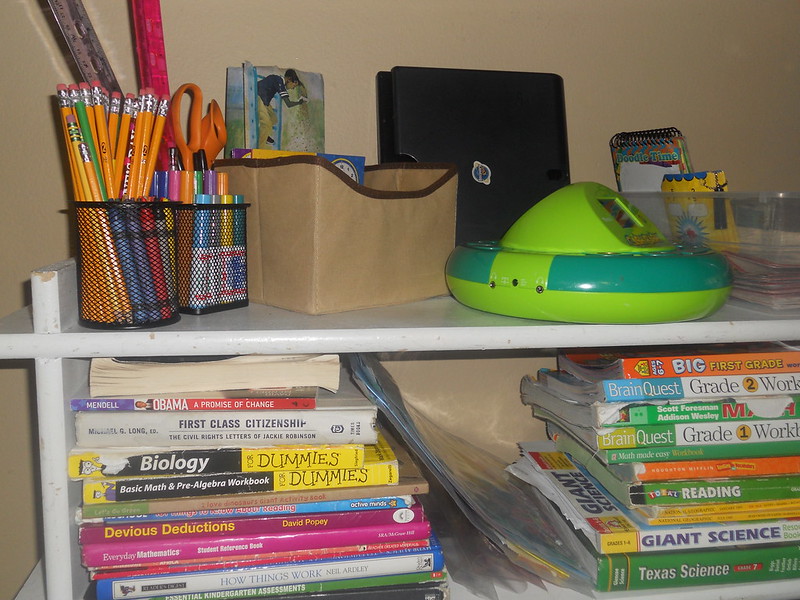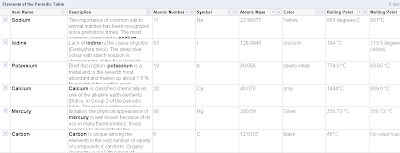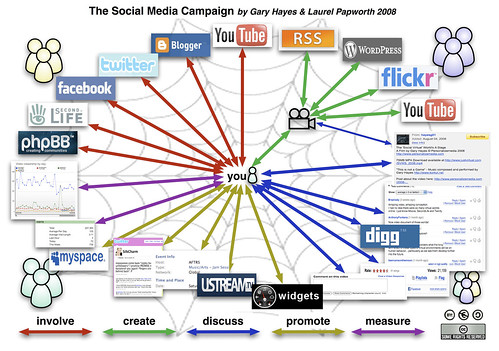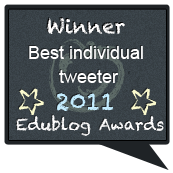When I was a Director of Instructional Technology it was always a fun day when we could deliver brand new devices to a school. The students and teachers were always excited and ready for the new possibilities ahead.
Then after a few weeks frustration would set it. Students would loose work, teachers had to spend hours trying to figure out which document belonged to whom and we’d see lots of devices in the shop for repair.
The focus on our instructional technology team was on the “stuff” kids could create when we should have started our conversations on the obvious.
Creating cool stuff is great but there has to be basic foundational skills first.
Norms are important when it comes to using technology. (Of course technology allows us to do things truly transformational and we will deviate from the documented ways tools are to be used.) We might believe that students are “digital natives” when in reality they are trying to figure this stuff out just like the adults in the room are. The difference is our approach and mindset. That said, having a basic set of norms in place across classrooms will be important to any successful technology device use.
Digital Citizenship-If there isn’t a long standing conversation and fully-integrated approach to digital citizenship then the validity of any technology implementation has to be called into question. Full stop. Simply teaching one lesson at the beginning of the school year or having students sign some meaningless “acceptable use policy” isn’t enough. There has to be a constant and ongoing conversation about all aspects of digital citizenship.
Digital citizenship is more than just making sure kids don’t cyberbully or know how to spot fake news. There are actually 9 parts to digital citizenship and we don’t take enough time to talk about any of them. Items like health and wellness, actually taking a break from technology. Or raising questions around access and equity so all understand. These are just as important as protecting our personal information and etiquette.
CommonSense Education has an amazing K12 Digital Citizenship curriculum that is free and easy to implement. Lessons cover every aspect of digital citizenship and are designed for every classroom throughout the year.
Naming Conventions-This one bit me and my students more than once. With the advent of Learning Management Systems (LMS) like Microsoft Teams and Google Classroom and other digital platforms it is much easier for students to turn in work electronically. Mine and my students problem was probably one faced by many educators. Because most adults have been using technology for a while now we have developed our own methods of naming files. The problem is many students haven’t developed that skill. (Heck, even getting them to put a name on their paper is still a problem!)
Having a consistent naming convention will not only save you time and energy but will also teach students the same. This works best when you talk about it as a school or a team. Talk about the various assignments and projects you will have students turn in throughout the year. Come up with a constant naming convention that is consistent for all teachers and students. Starting with the date an assignment is due is a visual reminder to the student and the teacher what the assignment is. Include the first initial/last name of the student, assignment short name and the class name and period number. If I am submitting my plant identification notes to my 3rd period biology class that is due on September 1, 2018 I would name it “090118_SAnderson_PlantID_Bio3.” Yours doesn’t have to be exactly like this but work as an instructional team to find what works for you. This saves you from having 30 files all called “Doc1” and also helps with revisions as well.
Folders and General Organization-Following along with consistent naming conventions, teaching students good digital organization skills will be something students (and the adults too) will look back upon and be grateful for. Many digital drives like Google Drive and OneDrive have powerful built in search features that allow you to find what you are looking for if it gets lost. However, if we organize things from the very beginning we don’t have to rely on the search at all. Have students create folders for each class and for each assignment. Use your naming convention strategy to keep things consistent.
Organization goes beyond folders and files. Students need strong curation skills as well to make sure that the other digital information they find can be retrieved. Helping them understand how and having a program like OneNote, Pocket or Diigo to tag and organize sites, articles, and visualizations can save all of us from a lot of frustration.
Saving And Backing Up-Good or bad, saving documents or files has become almost a non event. If we are using Word Online or Google Docs the files are save automatically and everything syncs everywhere automatically. But reminding students that saving regularly should be a part of their workflow is important.
Setting up for offline access can also be a great way to allow students to keep working without having to rely on internet access. If you allow students to take devices home find out how to set-up files and folders for offline access. I was recently in a district talking to some high school students who were taught from early on to sync all their files in their digital notebooks locally to their laptop at the end of every period so that they could keep working no matter where they were. When they got back to school the next day everything synced automatically and went back into the cloud.
Whatever method you use students (and the adults too) should be saving and regularly backing up their work. It’s just a good digital practice to have.
Permissions-With a lot of the creative work that we will have students do using their devices having the appropriate permissions will be key. Students may need access to the camera, mic, USB or other ports. Be on the lookout for those pop up messages. On iPads and Chromebooks they are pretty easy to spot but it can be tricky. Find out the process with your devices to ensure those permissions are set-up for what you need before you need them. Keep in mind if your devices are centrally managed you may have to talk to your technology team.
Care and Maintenance-Lastly, devices are a generally a large investment by any school or district. Therefore making them last, problem-free, should be a constant reminder. And these are good habits to form now rather than dealing with an issue in the future.
Sometimes we expect kids to respect the technology we give them but they need to reminded. Keeping liquids away, not throwing them or just tossing them in a bookbag, keeping the keys on the keyboard, keeping them charged, anything you’ve seen or experienced yourself make for great talking points. Have students brainstorm a list of care and maintenance tips and help them take ownership of their devices.
Then after a few weeks frustration would set it. Students would loose work, teachers had to spend hours trying to figure out which document belonged to whom and we’d see lots of devices in the shop for repair.
The focus on our instructional technology team was on the “stuff” kids could create when we should have started our conversations on the obvious.
Creating cool stuff is great but there has to be basic foundational skills first.
Norms are important when it comes to using technology. (Of course technology allows us to do things truly transformational and we will deviate from the documented ways tools are to be used.) We might believe that students are “digital natives” when in reality they are trying to figure this stuff out just like the adults in the room are. The difference is our approach and mindset. That said, having a basic set of norms in place across classrooms will be important to any successful technology device use.
Digital Citizenship-If there isn’t a long standing conversation and fully-integrated approach to digital citizenship then the validity of any technology implementation has to be called into question. Full stop. Simply teaching one lesson at the beginning of the school year or having students sign some meaningless “acceptable use policy” isn’t enough. There has to be a constant and ongoing conversation about all aspects of digital citizenship.
Digital citizenship is more than just making sure kids don’t cyberbully or know how to spot fake news. There are actually 9 parts to digital citizenship and we don’t take enough time to talk about any of them. Items like health and wellness, actually taking a break from technology. Or raising questions around access and equity so all understand. These are just as important as protecting our personal information and etiquette.
CommonSense Education has an amazing K12 Digital Citizenship curriculum that is free and easy to implement. Lessons cover every aspect of digital citizenship and are designed for every classroom throughout the year.
Naming Conventions-This one bit me and my students more than once. With the advent of Learning Management Systems (LMS) like Microsoft Teams and Google Classroom and other digital platforms it is much easier for students to turn in work electronically. Mine and my students problem was probably one faced by many educators. Because most adults have been using technology for a while now we have developed our own methods of naming files. The problem is many students haven’t developed that skill. (Heck, even getting them to put a name on their paper is still a problem!)
Having a consistent naming convention will not only save you time and energy but will also teach students the same. This works best when you talk about it as a school or a team. Talk about the various assignments and projects you will have students turn in throughout the year. Come up with a constant naming convention that is consistent for all teachers and students. Starting with the date an assignment is due is a visual reminder to the student and the teacher what the assignment is. Include the first initial/last name of the student, assignment short name and the class name and period number. If I am submitting my plant identification notes to my 3rd period biology class that is due on September 1, 2018 I would name it “090118_SAnderson_PlantID_Bio3.” Yours doesn’t have to be exactly like this but work as an instructional team to find what works for you. This saves you from having 30 files all called “Doc1” and also helps with revisions as well.
Folders and General Organization-Following along with consistent naming conventions, teaching students good digital organization skills will be something students (and the adults too) will look back upon and be grateful for. Many digital drives like Google Drive and OneDrive have powerful built in search features that allow you to find what you are looking for if it gets lost. However, if we organize things from the very beginning we don’t have to rely on the search at all. Have students create folders for each class and for each assignment. Use your naming convention strategy to keep things consistent.
Organization goes beyond folders and files. Students need strong curation skills as well to make sure that the other digital information they find can be retrieved. Helping them understand how and having a program like OneNote, Pocket or Diigo to tag and organize sites, articles, and visualizations can save all of us from a lot of frustration.
Saving And Backing Up-Good or bad, saving documents or files has become almost a non event. If we are using Word Online or Google Docs the files are save automatically and everything syncs everywhere automatically. But reminding students that saving regularly should be a part of their workflow is important.
Setting up for offline access can also be a great way to allow students to keep working without having to rely on internet access. If you allow students to take devices home find out how to set-up files and folders for offline access. I was recently in a district talking to some high school students who were taught from early on to sync all their files in their digital notebooks locally to their laptop at the end of every period so that they could keep working no matter where they were. When they got back to school the next day everything synced automatically and went back into the cloud.
Whatever method you use students (and the adults too) should be saving and regularly backing up their work. It’s just a good digital practice to have.
Permissions-With a lot of the creative work that we will have students do using their devices having the appropriate permissions will be key. Students may need access to the camera, mic, USB or other ports. Be on the lookout for those pop up messages. On iPads and Chromebooks they are pretty easy to spot but it can be tricky. Find out the process with your devices to ensure those permissions are set-up for what you need before you need them. Keep in mind if your devices are centrally managed you may have to talk to your technology team.
Care and Maintenance-Lastly, devices are a generally a large investment by any school or district. Therefore making them last, problem-free, should be a constant reminder. And these are good habits to form now rather than dealing with an issue in the future.
Sometimes we expect kids to respect the technology we give them but they need to reminded. Keeping liquids away, not throwing them or just tossing them in a bookbag, keeping the keys on the keyboard, keeping them charged, anything you’ve seen or experienced yourself make for great talking points. Have students brainstorm a list of care and maintenance tips and help them take ownership of their devices.














